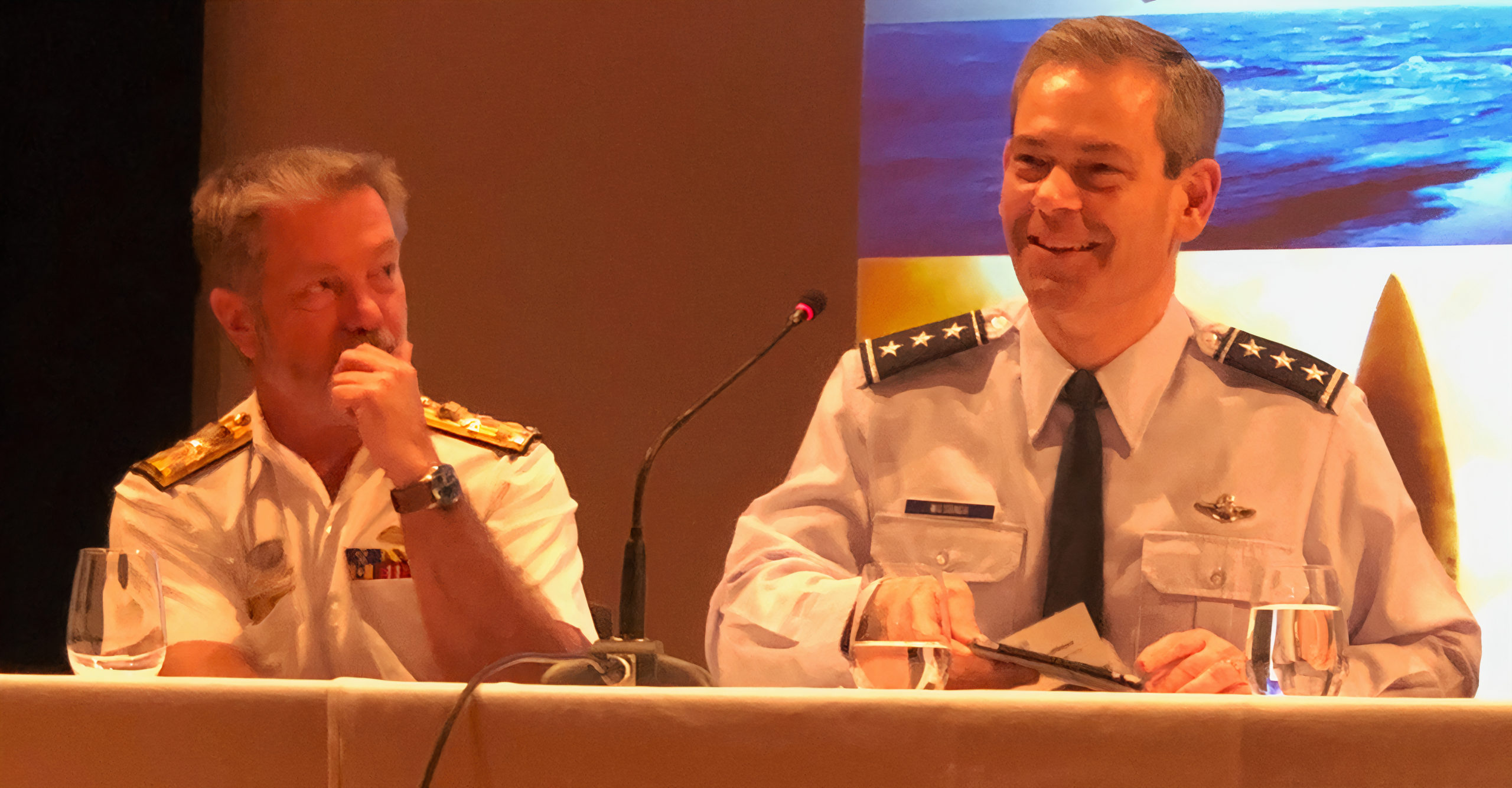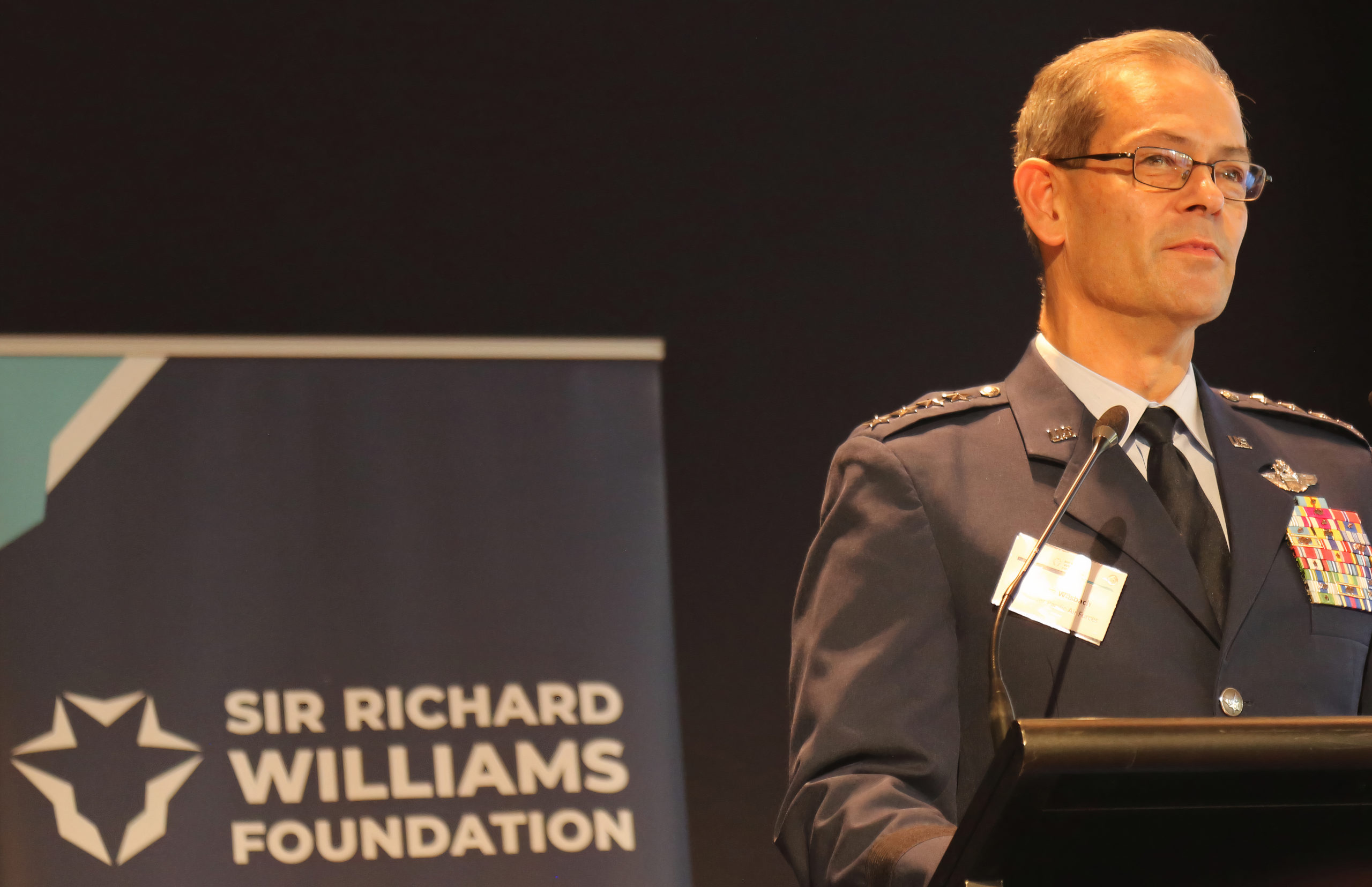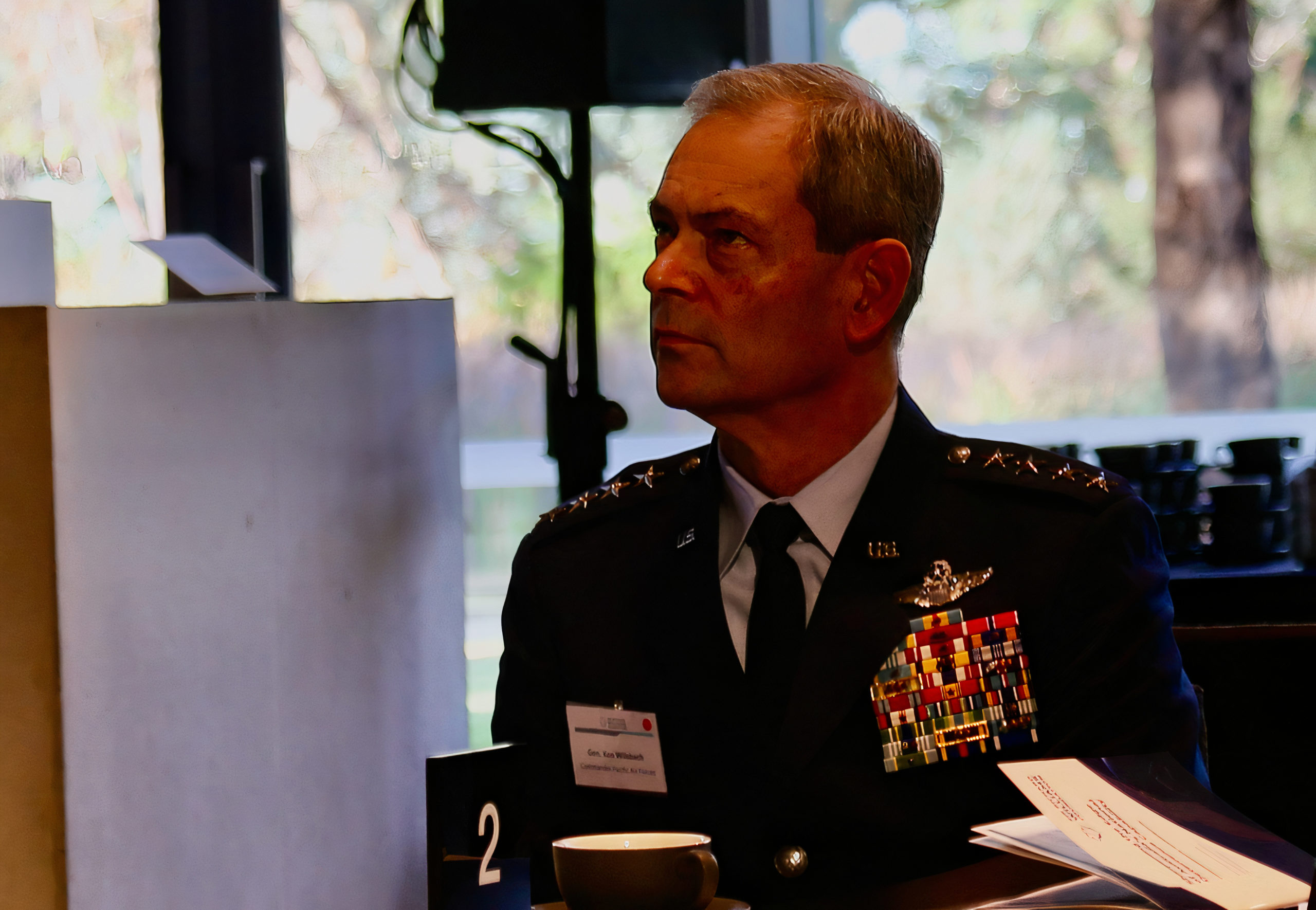By Robbin Laird
At the 30 March 2023 Williams Foundation seminar which focused on the way ahead for deterrence, one of the most significant of the presentations was General Wilsbach, the PACAF commander. He has come to Williams seminars since he was the 11th USAF Commander.
And as PACAF Commander, he has attended in person or virtually several.

As I noted in my interview with Air Marshal Chipman: “I started by raising the point that the other air force commander who spoke at the seminar was General Wilsbach, the U.S. Pacific Air Force Commander. I noted that General Wilsbach has come to several Williams Foundation Conferences, the first being when he was 11th Air Force Commander. His interest in working with Australia is suggestive of the evolving U.S. relationship with the ADF and in particular the RAAF relationship with PACAF. It is not widely known that General Wilsbach has an Australian Deputy Commander, which reflects the nature of the evolving relationship.
“Air Marshal Chipman: “General Wilsbach has been a fantastic partner for Australia. He has been interested in our evolution and commits a lot of his time and his intellectual firepower to working with us. He has created a position for an Australian Deputy Commander in his headquarters. We are very fortunate to have someone who recognizes the value of our strategic partnership.”
At this seminar, General Wilsbach’s focus was on integrated deterrence. He discussed the concept by first examining at how he looked about both concepts and how they then came together into a single construct.
“First, let’s look at integration. It’s useful to sort integration into three tranches: military, interagency, and across Allies and Partners. The military tranche is likely the best understood as we have made tremendous strides towards joint integration in the past few decades. The key to joint integration is command and control. C2 is what separates a professional fighting force from an armed mob.
“The ability to clearly communicate intent and relevant information undergirds armed conflict, and those who have failed in that task have paid in lives. Within INDOPACOM, we recognize the need to enhance our C2. What worked in Iraq and Afghanistan is not sufficient for this time or this region and we must adjust accordingly. To that end, we are iterating on a Joint Fires Network that leverages current capabilities while we procure new capabilities designed to flatten network architecture and get data where it needs to go, when it needs to be there.
“This network leverages the best practices and equipment on-hand today to link INDOPACOM together and has created an environment more joint than any I have seen in my 37 years of service. Crucially, it leans on starting our planning process with the joint perspective. PACAF Airmen routinely operate with Sailors at sea, Soldiers on the ground, Marines in the air, and Guardians managing orbital assets—often all at once.
“Here in Australia, you have demonstrated your commitment to joint operations through your Joint Training System and collocating your service joint force contributions under the Chief of Joint Operations. This naturally leads to the main benefit of joint integration—joint fires.
“Each service brings unique capabilities to the fight, and that means that F-35s may not be the best shooter for a target. Maybe a submarine would be a better solution, or an island-hopping Marine force with short-range coastal cruise missiles, or an Army hypersonic artillery battalion far back from the front lines. The point is that it doesn’t matter who takes the shot so long as the shot is effective.”
General Wilsbach then turned to what he considered to be the second tranche of integration, namely, interagency capabilities. “While our militaries are powerful forces, they are still tools. And like any tool, they are best applied to the range of problems they were designed to address. Thankfully, our governments have agencies purpose-built to cover domains in which the military is not built to operate….
“It also gives us the same opportunity that INDOPACOM has capitalized on with our joint planning—integration by design instead of by accident. National governments have a wide range of agencies for a purpose—each has strengths that complement others to support and defend national interests. Aligning those strengths toward a common goal is how that integration best serves its citizenry and is something we as air leaders must be cognizant of how to best utilize our capabilities. All that said, the integration of processes within one country will never be as strong as the integration of those processes across many.”
He argued that integration is a key capability which the liberal democratic nations have compared to the 21st authoritarian powers. “Just as it doesn’t matter which platform engages a target so long as the target is hit, it doesn’t matter who directs what effort supporting the international order so long as it remains stable.
“Our adversaries are incapable of that level of trust, transparency, and integration. Could you imagine a Russian general as a PLAAF deputy commander? I can’t! If I were an adversary planner, seeing a host of Allies and Partners moving in concert across every level of government with joint integration would keep me up at night.”

Then General Wilsbach turned to deterrence and more to the point to what he considers to be the essence of integrated deterrence. “To me, it comes down to credibility. Our credibility is determined by two things: readiness and willingness. Both our nations are answering whether we can respond to destabilizing actors that choose to defy international norms by increasing our readiness.”
He then highlighted the kind of actions which makes deterrence credible. “ We can deny adversaries the expected benefits of their aggressions, impose cost on them that they are not willing to accept, or show that we’re so resilient, we can overcome any impact they might have on us.
“The first message of denial is, in essence, the will to fight. Investment in modernization is one way to convey this message. More capable platforms allow us to respond to Chinese destabilization efforts across the Indo-Pacific more effectively, whether that’s an E-7 providing airborne C2 during an unprofessional intercept by the PLAAF or space assets providing overhead imagery of the PRC gray- zone actors trespassing in a nation’s exclusive economic zone.
“The second message of cost imposition is simple on its surface but has layers to consider. First and foremost, we all understand that no one wins if a conflict with China breaks out in the Indo-Pacific. That would be the worst-case scenario for every nation that calls the region home and is the last thing any of us want.
“So if an aggressor chooses to cross that line, they are already willing to bear considerable cost. That’s why the deterrence must be credible and convincing. You cannot leave room for doubt that the cost could be tolerable. To do that, you need to know who should receive that message. In authoritarian regimes, it must reach the few people at the top who hold all the decision- making authority. They may never bear the cost personally, but their power relies on the fear and submission of those who will.
“The third message is in line with Secretary Pezzullo’s remarks on resilience. Agile Combat Employment is one way we can create a resilience effect in combat. Through dispersal, mobility, and flexible C2, our forces use ACE to create enough targeting dilemmas for an adversary that we’ll always have forces in the fight to challenge them.
“As another example, Australia has inspired the region by demonstrating resilience to diplomatic and economic coercion. Similar actions of resilience are occurring in fields as varied as air defenses to industry supply chains.”
He concluded with this correlation of integrated deterrence with the kind of global development which liberal democracies favor.
“Denial, cost, resilience. Ideally, our deterrence actions should convey all three messages simultaneously. If I were an adversary planner, seeing capable forces across multiple, like- minded nations committed to action, able to deny my goals at overwhelming cost to me, and resilient enough to weather any of my attacks, that would keep me up at night. Integrated deterrence requires integration, readiness, and willingness, but it also needs one more thing—belief.
“Committing to upholding peace and stability is not an easy path to take. It requires significant investment of both time and resources, constant maintenance, and hard choices by leaders like yourselves. All of that requires a belief that it is worth it. I believe upholding the international order that has led to the most prosperous time in world history is worth it. I believe standing as a shield against authoritarianism is worth it. And I believe preserving our shared values of democracy, human rights, and freedom is worth it.”
See, the following as well:
Shaping a Way Ahead for the Networked Integrated Force: The Perspective of PACAF
ADF and Allied Perspectives on the Way Ahead for Force Modernization
Shaping a Way Ahead for Pacific Defense: The Evolving Role of the USAF


